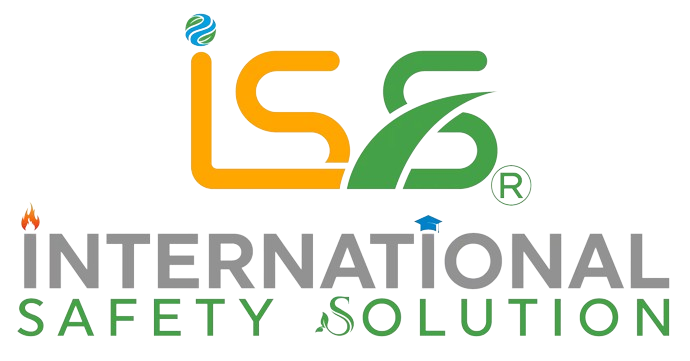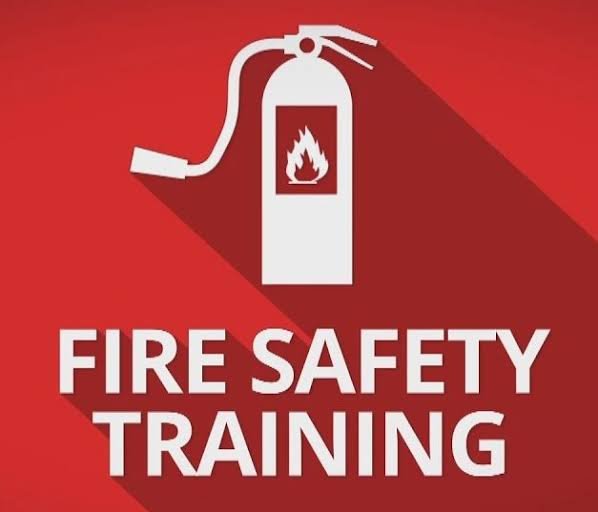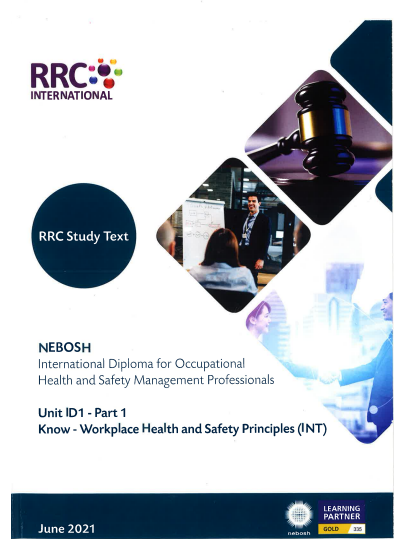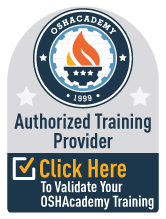Discover the newest NEBOSH past paper in our blog, a crucial asset for excelling in occupational health and safety exams. Elevate your preparation with the latest official material. To view nebosh past paper
Nebosh Paper Solution 6th September 2023
Task 1: Emergency response
Question
Following are the points highlighting how the DSO effectively managed the emergency:
Effective communication: When the DSO was running late due to bad weather, he
quickly let the NSO know. This communication was important in making sure the NSO
was informed about the issue and prepared to take action if required.
Effective utilisation of resources: The DSO made good use of the resources that were
available, although there were few first aid supplies. He showed efficacy in a difficult
situation by using a blanket and his coat to protect NSO from more exposure to the cold.
Making use of an electronic monitoring system: The electronic monitoring system
was successfully utilised by the DSO to locate the last known position of the NSO. By
reducing the search area, this information assisted in finding the injured NSO faster.
Radiation-based proactive communication: The DSO repeatedly attempted to radio
the NSO, demonstrating tenacity in seeking to make contact. By communicating
proactively, it made sure that all possibilities for getting in touch with the NSO were
explored.
Quickly calling emergency services: When the DSO realised how bad the situation
was, he did not think twice before calling the emergency services. This prompt action
probably sped up the medical staff’s response, which might have lessened the
seriousness of the NSO’s head wound.
Actual Location Information: The DSO gave a thorough description of the NSO’s
suspected location to the emergency services and gave them a gatehouse access code.
By doing this, it was made certain that the emergency personnel arriving on the scene
received full and clear details.
Staying cool and calm: During the emergency, the DSO maintained his composure and
concentration. The ability to make better decisions and communicate effectively with the
NSO and emergency services is made possible in such circumstances by maintaining
composure.
Lack basic first aid supplies: Despite the fact that first aid had few supplies, the DSO
took the necessary precautions to safeguard the NSO from any additional injuries.
Placing a blanket beneath and covering the NSO assisted in preventing hypothermia,
which might have been fatal in freezing weather.
Concern for Safety: The DSO’s remark about working more quickly in inclement
weather suggested that he was aware of the potential for danger. For security officer to
be safe and in good health, they must be aware of their difficult circumstances at work.
Follow through on emergency protocols: The DSO showed a dedication to safety
procedures by adhering to established guidelines, such as calling for assistance,
reviewing the monitoring system, and offering immediate treatment. This dedication to
safety procedures helped to ensure a well-coordinated response to the situation.
Task 2: Managing risks for those working on site
Question 2 (a
The organisation’s approach to managing risk affecting SOs working at the wind farm has
the following strengths:
Site Patrols Occasional: A proactive security approach is shown by the organisation by
having security officers (SOs) patrol the wind farm site on a regular basis to check the
boundaries and the regions around the wind turbines. This proactive approach helps to
protect the site’s credibility, reduce the likelihood of unauthorised access, and address
security flaws.
System for electronic monitoring: The use of an electronic monitoring system made it
easier to keep track of SO’s activities in real time and provided a computerised record for
monitoring. Additionally, if the system doesn’t provide the data within a certain period of
time, the office contacts the SOs to see if there are any problems.
Communicating Effectively: Mobile phones and two-way radios are used to maintain
ongoing communication between SOs at the site despite the difficult weather and poor
cell phone coverage. Their capability to plan safety measures and handle emergencies
has improved as a result.
Emergency Action Procedure: In order to ensure employee safety, Secure National
has provided SOs with clear guidance to contact emergency services as soon as
possible in case of emergency. This quick reaction may be essential for reducing hazards
and guaranteeing the safety of personnel.
Training in first aid: Making it mandatory for SOs to receive first aid training in order to
work at the sites is a wise choice. First-aid training for SOs is an important skill. Making it
cumbersome for only licenced SOs to be on duty at the sites Their ability to respond
quickly in emergency situations increases the likelihood that accidents or injuries will be
successfully treated.
Handover of Shifts: It provides consistency in security operations to require SOs to
show up early for shift changes. This procedure makes it possible for information to be
seamlessly transferred between departing and arriving SOs, lowering the possibility of
security coverage breaches when shifts are changed.
Consistent one-on-one meetings: It provides consistency in security operations to
require SOs to show up early for shift changes. This procedure makes it possible for
information to be seamlessly transferred between departing and arriving SOs, lowering
the possibility of security coverage breaches when shifts are changed.
Implementing Access Control: By guaranteeing that only authorised workers may
access particular sites, the necessity for SOs to scan ID cards at each wind turbine
improves security. This security technique lessens the possibility of unauthorised access
or equipment abuse.
Constant Data Reception Monitoring: The commitment of the regional office
demonstrates their concern for ensuring that security officers are carrying out their
responsibilities. If there is a delay in receiving data from the monitoring system for more
than six hours, the office calls the SOs to make sure everything is alright. This rapid
follow-up assists in identifying potential problems as soon as possible.
Rapid reporting of incidents: The NSO’s accident was reported to emergency services
and the regional office right after, demonstrating a culture that places a high priority on
the health and safety of employees. This rapid response helped the NSO get health
treatment and assistance when he needed it.
Question 2 (b)
The organisation’s approach to managing risk affecting SOs working at the wind farm has
the following weaknesses:
Failure to do a site-specific risk assessment: Because there wasn’t a risk assessment
conducted for specific sites, it’s possible that the wind farm’s particular risks and
circumstances weren’t sufficiently addressed, which raised the possibility of accidents.
Not enough training updates: SOs did not receive regular refresher training, which may
leave them with skill and ability gaps, which could be particularly problematic when
handling new safety standards or shifting to a new environment.
Inadequate culture of incident reporting: There was a problem with openness and
collaboration inside the organisation because there were concerns regarding the
reporting of accidents and events. Insufficient reporting may make it more difficult to spot
reoccurring hazards.
Issues with communication: Communication barriers arise in emergency situations due
to the unreliable mobile phone coverage and the reliance on short-range radios in remote
areas, which delay respond and risk safety.
Inadequate Winter Weather Preparation: The chance of injuries due to slips and falls in
hazardous conditions increased when snow and ice along the path had not been cleared.
This shows the absence of active preparation for harsh weather.
Health and safety documentation is lacking: The important details, such as site, specific risk assessments or records of past accidents, in the documentation provided to
the consultant were lacking, making it difficult to carry out an in-depth risk assessment.
Ignoring employee complaints: During the one-on-one meetings, the DSO expressed
issues multiple times regarding the absence of refresher training that had not been
addressed, showing that concerns were not properly taken into account.
Insufficient First Aid Materials: During the emergency situation, DSO found the first-aid
kit to be lacking important supplies. Opening the first-aid kit, it only had safety pins,
disposable gloves, and small plasters.
Missing regular risk assessment reviews: Risk assessment was not conducted
annually at Secure National. New hazards could go undiscovered in the absence of
routine risk assessment evaluations, and current mitigation strategies might eventually
stop working.
Insufficient Follow-Up on Incident Investigations: Not all mishaps and occurrences
are reported at Secure National, which indicates incident investigations are not being
properly followed up. The organisation will be unable to stop similar problems from
happening again if the fundamental causes of incidents are not addressed.
Absence of Monitoring: The Secure National was dependent on ROM site visits on an
irregular basis, only becoming involved in major issues. Therefore, the health and safety
of SOs may not be properly monitored particularly during night shifts or severe weather.
Not having a Healthy Safety Culture: The ROM’s statement that the audit required “a
lot of effort for a site like this” shows his ignorant attitude towards safety, and showing
safety might not be a top priority for him
Task 3: Active and reactive monitoring measures
Question 3 (a)
The following are the reactive (lagging) monitoring measures that the organisation could
implement:
Refresher Training: Employees should get regular refresher training. As mentioned in
the scenario, a lack of refresher training was available for SOs, which may leave them
with skill and ability gaps, which could be particularly problematic when handling new
safety standards or shifting to a new environment.
Investigating and auditing: Routine audits and inspections for health and safety should
be performed, with an emphasis on adherence to rules and guidelines. Professionals with
the necessary qualifications should conduct these internal and external audits. As
mentioned in the scenario, the risk assessment was not conducted regularly.
Reporting and maintaining records: A detailed record of all mishaps, events, and nearmisses should be kept. These documents have to be simple to read and examine in
order to spot trends and potential areas that need improvement. As mentioned in the
scenario the risk assessment did not contain any reference to specific sites.
Employee’s opinion: Employees should be encouraged to share their opinions on
workplace health and safety issues. This input may reveal hidden risks and issues that
other monitoring techniques might not have detected. As mentioned in the scenario DSO
raised the issue in multiple one-to-one meetings but no action was taken.
Investigating and reporting incidents: The procedure for reporting events, near, misses, and accidents should be put in place by Secure National so that staff members
can do so without delay. The reasons and associated elements of each occurrence
should be thoroughly investigated in order to find the areas that need to be improved.
Analysis of the incident: There should be a thorough investigation into accidents and
events. Examining event reports, having interviews, and gathering pertinent information
are all necessary parts of this study in order to spot patterns and common causes that
may be improved upon specifically.
Documentation evaluation: Check and modify health and safety documentation on a
regular basis to make sure it reflects modern procedures and the lessons learned from
previous mishaps.
Industry standards and best practises: The health and safety performance of the
Secure National should be compared to industry standards and the latest practises. The
organization’s shortcomings may be highlighted by this outside viewpoint.
Communication and reporting process: Establish efficient channels of communication
to allow for the internal and external reporting and monitoring of safety concerns and
occurrences while ensuring that reports are made in accordance with legal requirements.
As mentioned in the scenario DSO raised the issue in multiple one-to-one meetings but
no action was taken.
Corrective measures: Establish open channels of communication for reporting
occurrences and issues relating safety both inside the company and to outside parties.
By informing the proper authorities of situations ensure that legal responsibilities are
being followed.
Recording of Learnings: Investigative findings and audit findings should be
documented and disseminated within the organisation. This knowledge exchange can
encourage a culture of continual development and aid in preventing future occurrences of
similar tragedies.
External reviews and accreditation: Take use of external safety certifications or audits
provided by reputable organisations. These outside confirmation prove a dedication to security and can provide helpful comments.
Question 3 (b)
Following are the active (leading) monitoring measures that could be readily available for
use by the organisation:
Ongoing Site Inspections: Regional office managers (ROMs) and outside health and
safety experts can work with Secure National to set up a system of routine site
inspections. The main objectives of these inspections should be to spot potential risks,
confirm that safety procedures are being followed, and assess the equipment’s state of
readiness.
Training programmes for safety: For security officers (SOs), implement a thorough
safety training programme that includes recurring refresher sessions. This guarantees
that all SOs are knowledgeable about safety practices and are informed of any updates
to rules or processes.
Investigating and reporting incidents: Establish an effective incident reporting system
that motivates SOs to immediately report mishaps, near misses, and safety issues. To
find the root cause of all occurrences and put corrective measures in place, make sure
that every incident is thoroughly investigated.
Environmental surveillance: Consider installing weather monitoring systems that can
provide real-time information on factors like snowfall, temperature, and wind speed that
could have an effect on safety because of the weather challenges at the wind farm
location.
Task 4: Considering the impact and management of change
Question 4 (a
Following are the reasons why the competence of this team is important in the
management of change:
Recognising challenges: Potential dangers, difficulties, and obstacles that can appear
during the transformation process can be recognised by competent team members. They
have the expertise and skills to foresee employee resistance, delays in operations, and
other problems that can undermine the change effort. This proactive approach enables
the team to create plans to lessen these risks.
Involvement and communication of employee: Competent team members are aware
of how crucial successful communication and employee involvement are to addressing
change. They are able to create plans for communication that take into account the
issues and requirements of workers at all organisational levels. They are skilled at
establishing a welcoming and honest atmosphere in which staff members can voice their
suggestions and grievances.
Change impact analysis: Competent team members may examine how the change will
affect many parts of the organisation, such as operations, workflows, job positions, and
morale among employees. This assessment aids in identifying areas that need extra
focus and improvements throughout the transition period.
Adapting Change Management Approaches: Because every organisation is different,
approaches to change should be customised for Secure National’s particular
requirements and organisational culture. Competent team members can modify tactics to
match the context of the organisation, guaranteeing that the strategy is in line with the
company’s objectives and ethics.
Observation and Assessment: The ability to create KPIs and measurements for
gauging the effectiveness of the change endeavour is a talent that competent team
members possess. In order to make sure the modification is on track and having the
desired effects, they can monitor the progress, collect feedback, and make any
necessary modifications in real-time.
Sustainable Change: For improvements to be successfully executed as well as
maintained over a long period of time, the team’s competency is important. To
incorporate the changes into the organisational culture, they can develop strategies for
sustainability and continual enhancement procedures.
Considerations for laws and Compliance: Compliance with laws and professional
standards is essential company like Secure National. Competent team members can
make sure modifications adhere to legal standards and that the relevant compliance
mechanisms are effect.
Knowledge of the fundamentals of change management: The best practices,
processes, and guiding concepts of change management should be thoroughly
understood by all team members. They must be knowledgeable about how to properly
design, carry out, and track change efforts. This knowledge guarantees that proven
tactics and methods are used to guide change initiatives.
Question 4 (b)
Following are the types of changes that require the management of change controls:
Implementation of new technology: The installation of a new electronic monitoring
system to replace an old one is a technological advancement. It is important to handle
change controls properly since the adoption of new technology may have an effect on
work procedures, data handling and security procedures.
Environmental Changes: Change controls may need to be managed in response to
cyclical weather changes, such as a lot of snowfall. The accessibility of locations, the
transportation situation, and the security of employees exposed to hazardous weather
conditions may all be impacted by these changes.
Inspection of health and safety: A conscious change was made to enhance safety
protocols by choosing to conduct a health and safety audit. In order to put the suggested
improvements into action, these audits, which seek to detect and address safety hazards,
should call for a systematic management of the change process.
Refresher training: The DSO’s acknowledgement of the need to deal with this issue and
the lack of refresher training for staff as a shift in the training process. It would be
necessary to manage change controls appropriately in order to carry out a refresher
training programme.
Modifications to the documentation and reporting: The MT said that new reporting
regulations for accidents and incidents would need a modification in the recordkeeping
and reporting procedures.
Increase in Operations: A significant change in the onshore wind farm’s activities
occurred with the addition of another five wind turbines and the expansion of the
enclosed area. By adding this, new risks and safety concerns would have probably been
created that would require the management of change controls.
Task 5: Policy review
Question 5
It may be necessary to review Secure National’s health and safety policy for a number of
reasons:
Policy was out of date: The health and safety policy, issued in February 2021, is now
many years outdated. Health and safety policies should be evaluated on a regular basis
(generally once a year) to verify that they are updated and efficient.
New additions to the site: Five additional wind turbines have been added to the wind
farm site, increasing its size. In order to handle the increased risks and hazards caused
by the site’s modified structure and scale, the policy must be reviewed.
Insufficient risk assessment: Since the last risk assessment was concluded in 2017,
the current risk assessment is general and does not address wind farm-specific sites. It
needs to be examined to make sure it appropriately reflects the specific hazards and
circumstances at the sites therefore the policy must be reviewed.
Information not specific to site: The present policy does not have information on the
wind farm’s specific sites, making it less useful for informing employees about the risks
and dangers that they might face.
Training needs for refreshers: The DSO told the consultant about the absence of
refresher training, suggesting that the policy might not effectively meet the need for
training on a regular basis. The policy should be reviewed to see if any upgrades to
refresher training are required.
Concerns regarding reporting accidents: There have been concerns raised by DSO
regarding the accuracy and integrity of the reporting of accidents and incidents. Any
flaws in the accident reporting process can be fixed with a policy review, which can also
promote more accurate reporting.
Problems with the winter weather: The consultant noticed difficulties associated with
performing duties in the cold. To safeguard the wellbeing of employees, an updated
policy should provide clear instructions on how to operate safely in severe weather.
Feedback from the meetings: During the one-on-one meetings, the DSO expressed
issues multiple times that had not been addressed or rectified by the current policy. To
make the policy better, employee opinion should be taken into account.
Learning from recent accident: An important lesson can be learned from the recent
accident at the wind farm site. The policy has to be reviewed and amended to provide
safeguards against future incidents of this nature.
Changes in regulations: Since policy was last updated in 2021, regulations and
legislation relating to health and safety may have been modified or undated. The policy
should be revised to comply with the most recent legal standards.
Newer hazards: Since the last policy update, there may be new risks and dangers in the
security sector. The policy should be revised and updated so that new hazards can be
evaluated and addressed.
Innovations in technology: There were advancements in technology, like the electronic
monitoring system. Any new safety measures related to technology should be included in
the policy.
Turnover of employees: The workforce may have changed, with new hires coming and
quitting. To guarantee that all employees get suitable safety training and guidance, the
policy should be updated.
Good practices: To make sure that Secure National is adhering to the most recent
safety recommendations, the health and safety policy should be reviewed because
industrial sector best practices may have changed.
Protocols for communication: In circumstances like the one mentioned in the scenario,
when the DSO has trouble contacting the NSO in an emergency situation, the policy
should be reviewed and updated to incorporate clear and efficient communication and methods.
Task 6: Monitoring and measuring (audits)
Question 6
Following are the strengths of Secure National’s approach to the audit:
A culture of proactive safety: The action taken by Secure National to perform a safety
audit right away after the incident shows that they have a proactive safety culture. They
are acting right away and aren’t waiting for further incidents to happen.
Outside consultant: Choosing a third party consultant who is a Chartered member of a
health and safety professional body demonstrates a dedication to getting a fair and
professional evaluation of safety procedures.
Participation of site staff: By asking SOs from each site to participate in the yearly risk
assessment reviews, it is made sure that individuals who are on the job are actively
involved in the safety assessments. This strategy takes advantage of their first-hand
experience.
Documentation based transparency: It demonstrates openness and readiness to share
relevant information, providing the consultant with necessary health and safety records,
such as the company’s policy, previous risk assessment, and other guidance materials.
Interaction during the site tour: The ROM and DSO publicly talked about the recent
accident and day-to-day difficulties at the site, encouraging open dialogue about safety related problems.
Recognising Difficult Situations: Recognising the challenges of operating in severe
weather condition demonstrates an understanding of potential dangers and the need to
prepare for them.
Reporting accidents quickly: Accident information is recorded if reported, according to
the ROM. This demonstrates their dedication to recording and examining accidents in
order to increase safety.
Engagement of the management team: The management team’s full participation in
analysing the audit findings and giving a plan of action illustrates their dedication to
safety enhancement at all organisational levels.
Regularly scheduled yearly risk assessment reviews: The choice to move forwards
with annual risk assessment reviews demonstrates a dedication to frequent safety
reviews and continual improvement.
Taking into account employee feedback: The ROM’s remark that they doubted
whether all accidents and incidents were reported shows openness to taking and sharing
feedback, which is essential for finding concealed safety issues.
Utilising technology effectively: The installation of electronic monitoring systems to
track SOs’ position and actions, as well as automated notifications for data that is
missing, is an efficient application of technology to improve security and safety at remote locations.
Task 7: Financial arguments to improve health and safety
Question 7
Following are the financial arguments that could be used to convince Secure National’s
MT that health and safety need to be improved:
Cost saving measures: The cost of injuries, mishaps, and associated costs can be
significantly decreased by putting strong health and safety measures in place. The
Secure National can save money by avoiding accidents by reducing medical costs,
lawsuits for compensation, and delays in work. As mentioned in the scenario at the wind
farm site, Secure National has already had a serious mishap that led the NSO to miss six
weeks of work and required medical attention.
Regulation adherence: Secure National can benefit from following health and safety
laws by avoiding fines and penalties, in addition to being a legal necessity. Because noncompliance may have a negative financial impact, compliance is a wise choice for action.
The cost of insurance: Insurance prices may be reduced as a result of good safety
records. If Secure National shows a dedication to safety frequently, insurers may reward
it with lower insurance rates, which may lead to considerable savings over the years.
Productivity boosting: A place of work that is safe for employees encourages their
wellness and job fulfilment, which increases work efficacy and boosts productivity. As
mentioned in the scenario, when it’s cold outside, the DSO works faster to return to the
heated gatehouse. By enhancing safety, workers can concentrate on their work rather
than rushing because they are uncomfortable.
Worker’s claims for compensation: As mentioned in the scenario, as a result of the
accident, NSO sustained from injuries that needed medical attention and time off work.
Worker’s compensation claims are brought due to these situations, and the business may
be financially impacted. Accident avoidance lowers the incidence and severity of claims
like this.
Fewer staff turnovers: High staff turnover is expensive because of hiring, training, and
lost output from vacant positions. Secure National can decrease turnover by increasing
the spirit of its employees and improving safety.
Maintaining clients: The credibility and client trust of the business are improved by
maintaining a great safety record. By prioritising safety, Secure National has a higher
chance of getting its clients to renew contracts, maintaining a consistent flow of income.
Advantage over competitors: A positive approach to health and safety might give a
business an advantage in the marketplace. Secure National can set itself apart from rival
companies and attract customers who consider safety to be an important factor.
Continuity of operations: As mentioned in the scenario, mishaps and catastrophes can
affect performance and cause downtime. Making sure that there is a safe workplace
reduces delays, which can be expensive in sectors where constant provision of services
is necessary.
Costs of hiring: Unsafe workplaces may have difficulty luring qualified workers, creating
difficulties in hiring. The cost of hiring and training new employees can be decreased by
eliminating workplace dangers.
Efficiency in Inspection: By making health and safety enhancements, it is less likely
that inspections may turn up issues that need expensive corrective action. This can save
related costs and simplify the audit procedure.
Avoiding Long-Term Costs: Although initial investments at the wind farm site may
require money and resources, in the long term, Secure National will save money by
avoiding accidents, and these initial costs will be greatly outweighed by the risk reduction.

Conclusion
Successfully navigating NEBOSH papers requires a combination of thorough understanding, preparation, and effective time management. By following the tips outlined in this blog post and utilizing available study resources, you can approach your NEBOSH exams with confidence. Remember to stay calm, read the questions carefully, and demonstrate your understanding of health and safety principles through practical solutions. Best of luck on your NEBOSH journey and congratulations on taking a significant step towards a rewarding career in occupational health and safety!






This Post Has 2 Comments
Thanks on your marvelous posting! I genuinely enjoyed reading it,
you could be a great author. I will make sure
to bookmark your blog and may come back sometime soon. I want to encourage yourself to continue your great job, have
a nice evening!
Excellent article! We are linking to this particularly great article on our website.
Keep up the good writing.